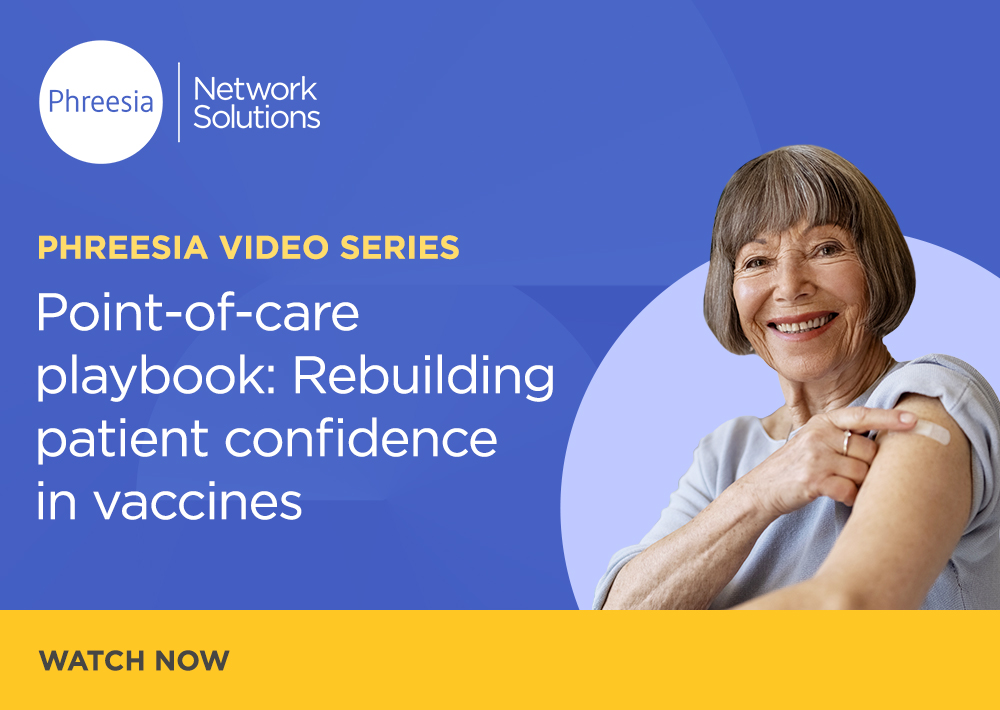
Personalized point-of-care (POC) messaging is a powerful, proven tool to improve the quality of doctor–patient interactions, especially when time is limited.
The challenge: So much to cover, so little time
As an internist and hospitalist, I can tell you that one of the most difficult aspects of practicing primary care is time—or more precisely, the lack of it. Although studies show that a primary care provider would need 27 hours a day to give patients comprehensive care, the average primary care visit in the U.S. is just 18 minutes long, and many are even shorter. In that brief time, providers must diagnose, treat, educate, motivate and—critically—build trust, often while juggling administrative tasks and growing patient panels.
Meanwhile, patients often arrive with a range of questions, symptoms and concerns—sometimes after waiting weeks for their appointment. Many are managing multiple chronic conditions or processing new diagnoses. Others are navigating personal, financial or logistical challenges that affect their ability to follow through on care. They’re looking for guidance, reassurance and a chance to feel heard. But with limited time, it’s not always possible to address everything they need. For instance, a single mother who comes in with a urinary tract infection also needs her PCP to review her blood sugar log and adjust her diabetes regimen, while also giving her a referral for a Pap smear.
These short doctor visits are intense, high-stakes interactions for everyone involved. Time pressure creates blind spots, and opportunities for education, prevention and behavior change often get lost in the shuffle. Yet, these are the very conversations that shape long-term health outcomes. What if we could ensure those conversations are more focused, relevant and effective without adding to the clinical burden?
The solution: The right message at the right moment
Personalized point-of-care (POC) messaging is a powerful, proven tool to improve the quality of doctor–patient interactions, especially when time is limited.
This type of POC messaging involves delivering clinically relevant and evidence-based content to specific patients at key moments in their care journey and is different from options like wallboards, which serve messages relevant to an entire specialty instead of a particular person, resulting in many messages not being seen by or impacting patients. POC messaging often includes sending educational materials about a condition earmarked by a given patient’s reported symptoms during the digital check-in process, such as a doctor discussion guide they can have ready when their appointment begins. When done thoughtfully, these messages do more than inform—they prompt engagement and spark dialogue, which can influence care decisions and health outcomes.
In fact, nearly three-quarters of healthcare providers (HCPs) say they notice that patients engage more actively in treatment decisions when they have POC solutions as a reference1. And 64% of HCPs report that these solutions increase adherence to follow-up schedules and recommended tests2—demonstrating that well-timed, personalized messaging can lead to real, measurable improvements in care.
The result is a better-prepared patient and a more focused visit. Instead of spending precious minutes introducing a new topic, the provider can jump straight into a meaningful discussion about vaccinations, screenings, new treatment options or lifestyle modifications. Research shows that patient–provider communication is strongly correlated with outcomes such as adherence3,4, satisfaction5,6 and even physiological health indicators7.
Importantly, digital POC messaging can also help third-party organizations—like life sciences companies, government agencies and advocacy groups—deliver timely, evidence-based messages that support patients and clinicians alike. For example:
- A message about advanced treatment options for asthma can prompt a discussion that helps a patient struggling with control.
- A reminder about colorectal cancer screening can lead to early detection and better outcomes.
- An educational module on insulin delivery can empower someone newly diagnosed with diabetes to feel more confident managing their care.
However, to be effective, these messages must be delivered responsibly. That means leading with privacy, transparency and patient autonomy. It’s essential that patients have clear opportunities to opt in to receiving this type of content, without it affecting their experience of care. Ultimately, the goal is not just to inform, but to empower patients by delivering the right message at the right time, while honoring their preferences and protecting their privacy.
When digital POC messaging balances clinical relevance with patient privacy, it is not only powerful, but also sustainable.
The opportunity: Driving health outcomes where they matter most
For life sciences organizations, advocacy groups and government agencies, digital POC messaging offers a unique opportunity to engage patients and support clinicians when it matters most: in the moments before, during and after a clinical encounter.
Unlike traditional channels, like television ads that reach patients outside the context of care, POC messaging connects with individuals while they are actively thinking about their health—and while they’re about to speak with someone they trust. It’s a window of heightened attention and openness, and it’s exactly where these messages can have the greatest impact.
But not all POC strategies are created equal. The most effective ones are:
- Clinically aligned – built around current guidelines, best practices and patient needs
- Workflow-aware – integrated into the provider’s workflow in a way that supports—not disrupts—the care process
- Patient-first – respecting consent, privacy and preferences at every step
To realize the full potential of digital point-of-care messaging, organizations must think strategically about what, when and how messages are delivered. When content is thoughtfully timed and clinically relevant, it can become an extension of the care team—reinforcing provider guidance, supporting shared decision-making and empowering patients to act. Done well, it complements—not competes with—the clinical conversation.
Whether the goal is to raise awareness of public health priorities, introduce patients to new treatment options or close gaps in preventive care, these messages are most effective when integrated seamlessly into the care experience and aligned with patient needs in the moment.
The reality is, short doctor visits are here to stay. But with the right tools and the right strategy, we can make those minutes count. We can support meaningful conversations, more informed decisions and healthier outcomes for everyone involved.
Learn how Phreesia can help you deliver meaningful messages that support better conversations and better care.
Alicia Cowley, MD, MBA, is an internist and Medical Director of Network Solutions at Phreesia.
- Ipsos, 2025 “The Pulse of POC Marketing”
- Ibid
- Zolnierek KBH, Dimatteo MR. Physician communication and patient adherence to treatment: a meta-analysis. Medical Care. 2009;47(8):826-834. doi:10.1097/MLR.0b013e31819a5acc
- Schoenthaler A, et al. The effect of patient-provider communication on medication adherence in hypertensive black patients: Does race concordance matter? Annals of Behavioral Medicine. 2012;43(3):372-382. doi:10.1007/s12160-011-9342-5
- Boissy A, et al. Communication skills training for physicians improves patient satisfaction. Journal of General Internal Medicine. 2016. doi:10.1007/s11606-016-3597-2
- Johnson MB, et al. Impact of patient and family communication in a pediatric emergency department on likelihood to recommend. Pediatric Emergency Care. 2012;28(3):243-246. doi:10.1097/PEC.0b013e3182494c83
- Ruben MA, Meterko M, Bokhour BG. Do patient perceptions of provider communication relate to experiences of physical pain? Patient Educ Couns. 2018 Feb;101(2):209-213. doi: 10.1016/j.pec.2017.08.002. Epub 2017 Aug 4. PMID: 28803029.


